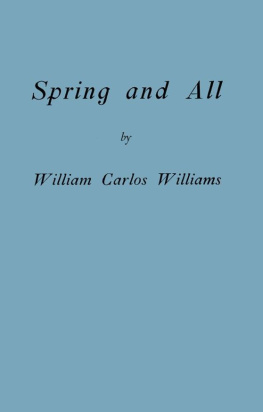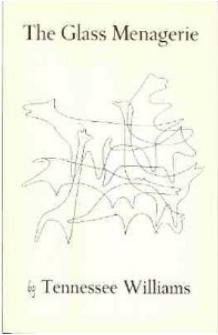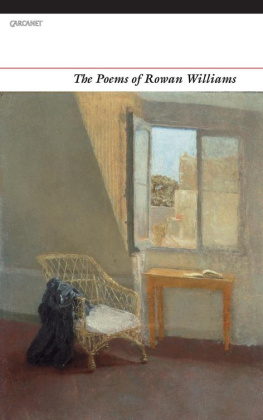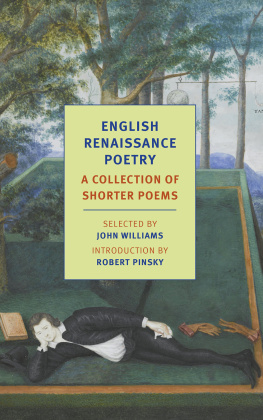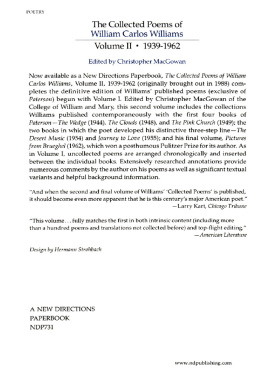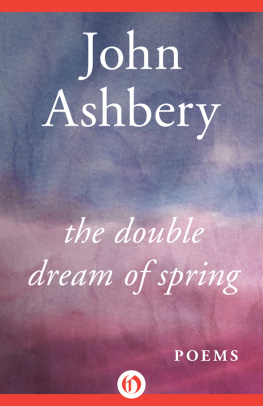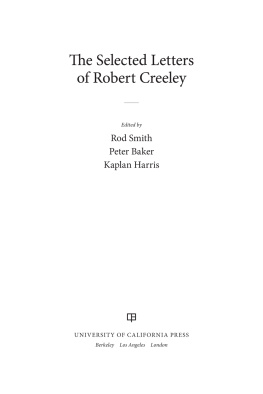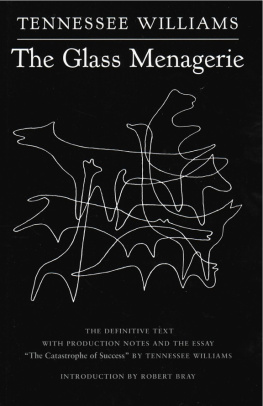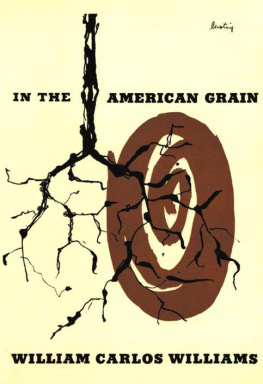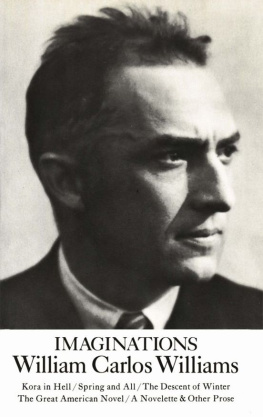It is difficult
to read now
how it was then
yet
The Great War is barely in the background.
The fatal flu pandemic fills the void, concentrating on the young and healthy. This weird little book is brought into the world the same month as the Munich Beer Hall Putsch, Hitlers first major drive to seize control. Among artists and writers, the urge for renewal is gaining ground in the aftermath of monstrous destruction, in the bud of worse to come. It is boggling that so much hearty artistic innovation has commenced to proliferate and thrive. Do or die. Those who can, do.
Even the wreckage of Europe is tempting to the young, creative, contrary, and restless. One American writer stays put, finishes school, starts a medical practice. One American writer sticks around to catch the babies. * * * 1923: Wallace Stevenss Harmonium was published, Mina Loys Lunar Baedecker, Jean Toomers unassimilable hybrid masterwork, Cane, and Spring and All, an equally unassimilable hybrid masterwork. That year, Yeats, whose dominance in poetry was commonly acknowledged, was awarded the Nobel Prize. Marianne Moores Observations and Gertrude Steins The Making of Americans were soon to clear the horizon.
The former would be as steady on its feet as a wading bird; the latter, a bollard of granite. The leonine-haired Ezra Pound was the force upon which many depended and with which all had to contend. Staying on his own side of the Atlantic tendered William Carlos Williams the breathing room he needed. Spring and All was printed in Dijon, by the same Darantiere who had printed Ulysses the year before; so the printer, at least, was already familiar with the oddities the English language could bear. Robert McAlmons Paris-based Contact Publishing Company issued Williamss manifesto-of-sorts in an edition of three hundred, most of which went undistributed. The year before, 1922, was high tide in poetry: The Duino Elegies, Trilce, and The Waste Land.
The latter was a head blow to William Carlos Williams. He had more or less absorbed the concussion of Prufrock and sounded off on it in his prologue to Kora in Hell. He had already recalibrated and redoubled to the task of staking out the new word for the not-so-new-anymore world. Then came The Waste Land, all tricked out with Sanscrit and Latin ornaments. The impact was as useful as it was painful. Whap.
Now he knew what he was opposing; now he could move in the direction he wanted to go-forward-in his small or large machine made of words. For Williams, poetry was meant to be in motion. He willed himself ready: How easy to slip/into the old mode, how hard to/cling firmly to the advance Williams epitomized the prepared observer. A watcher, a listener. Goat stubborn. Feet-in-the-soil independent.
He could write whatever, whenever, and as he damn well pleased. William Carlos Williams was the embodiment of the values Americans touted but seemed capable of expressing only in isolate flecks. With an English father and Puerto Rican mother, there was no compelling incentive to become an expat. He would embrace the contrary impulse. Like his fellow New Jerseyan, Whitman, his apostrophe was to the future, but he hankered for contact here and now. The charge of this writing was change.
His own personal epic and constantly shifting landscape was just on the other side of the parlor window, the whole procession. Like Whitman, he would gradually come to a great human understanding, an apprehension that eluded a number of his peers. Between great hails to the imagination and salvos of opprobrium, William Carlos Williams set one sharp-edged poem after another into the composition of an unframed original. So the one who did not cast off his roots chose the oldest trope in the book, SPRING, to push and pull American poetry into the present tense. Not before he had initiated a willful number of false starts, cranking up anticipation and repeatedly sabotaging expectations. Terrifying, as Robert Creeley was given to say. Terrifying, as Robert Creeley was given to say.
From page one, the doctor lurches into an exchange with his imaginary critics. In lieu of titles or subtitles or headings, he spoofs the typographical stunts of the times, using both Arabic and Roman chapters to fence off units of poetry and prose, completely out of sequence. Chapter XIII appears upside down. The effect creates a minor distraction, albeit intentional, but it is the abrupt shifting, cutting, and swerving that prevent the reader from ever relaxing into the text. The suspense of the performance is carried all the way to the edge of the petal. P. P.
Morgan have to do with anything except what new money can buy, Old Masters? What does it mean to be drunk with goats or pavement? Country or city? Who else but Williams would grasp that the place to get the latest news about the weather and the last word on death is the barbershop? Who else cared what the barber thought? And when the whole atavistic American scene gets intolerable, would anyone be there to drive the car? Tranquilly Titicaca indeed. The prose is a working-throughhot with argument, loud with opinion. The overall form is a grand improvisation. Here a little rapture on the possible; here a riff on Shakespeare, on Poe, on Anatole France. The poetry was struck in one sitting, executed with what Hugh Kenner called Williamss great technical perception. Here an ekphrastic poem on a painting by Juan Gris; here an homage to le jazz hot, le jazz cool; here a snapshot of what he saw through the windshield, or notations scribbled into a prescription pad.
References ladled out of the skyscraper soup of industry, advertising, local speechall the while spring itself was stiffly becoming manifest. Yet, for the mash-up of affinities, free-floating associations, and spasms of anger, Williams loved simplicity and order. He avoided the sesquipedalian habits of Pound and Eliot. The stripped-down poems in Spring & All are as quick and unencumbered as any nude tripping down the stairs. The choice enjambment, under the surge of the blue/ mottled clouds, the lucent precision of the modest noun glaze, and the assertion that The rose is obsolete were stock-in-trade. He delivered the language scrubbed clean, made new.
This was a gutsy, self-conscious generation of writers and artists. They all knew each other. Pound and H.D. and the painter, Charles Demuth, to whom this book is dedicated, were friends from the college years. Williams was soon to befriend Wallace Stevens and Marianne Moore and Mina Loy. The Stieglitz crowd.
Duchamp and the collector Walter Arensberg, and on and on. They promoted and financed one anothers dreams, shared and competed for lovers, for recognition and influence. Williamss profession planted him. In the city, the painters seeded his ideas. And he was there in the first rub, reading his Overture to a Dance of Locomotives at the 1913 Armory Show. (Ms.
Loy was impressed, but not enough to lie with him.) Williams was, according to Pound, the hardiest specimen in these parts. While zealously promoting the supremacy of the imagination, he dealt in real things, with individuals in real and current need. In his line of work, people were literally exposed. Then there was the endless variety of the species, which suited what Williams referred to as his nervous nature. Then everything along the roadside just popped out and demanded his immediate attention. He was a local.

